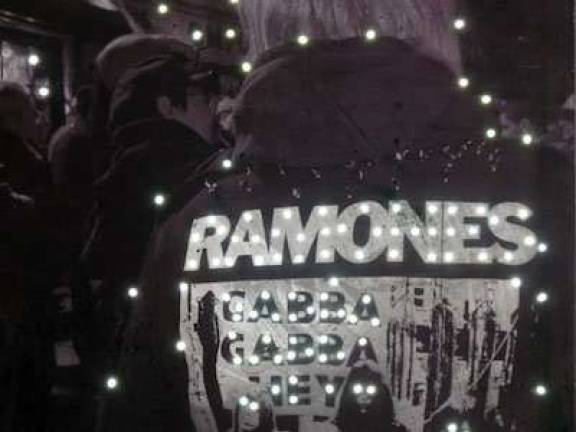Hello and Goodbye CBGB

A new exhibit pays homage to the patrons of CBGB
By Linnea Covington
When you first walk into the Bye Bye CBGB exhibit at Soho's Clic Gallery, the faces of disheveled punk rockers greet you. Pierced lips, funky hair and leather dominate the style, and though it appears they were shot in 1973, the images are from 2006, when the notorious venue finally shuttered its doors. Showing up at iconic CBGB OMFUG (Country, Bluegrass, Blues and Other Music For Uplifting Gormandizers) for its final 48 hours, Parisian visual artist Bruno Hadjadj shot the faces of those new and old punk rockers who had gathered to say adieu.
On Saturday, Oct. 14, 2006, Blondie's Debbie Harry belted out "Heart of Glass." The next night, Patti Smith played some tunes with Flea from the Red Hot Chili Peppers and ended her set with a rendition of "Gloria" that interlaced lines and melodies from various Ramones songs. I was there and, despite the cliché, it was a night to remember.
What most people don't talk about is what happened outside the doors. While only a fraction managed to get tickets, on that warm October night hundreds of fans remained outside. People from all over the world had come to see the club for the last time, touch its graffiti-covered walls, smoke cigarettes and sneak sips of cheap whiskey from a flask under its dirty 315 Bowery awning in hopes of catching a glimpse of one of the famous faces from CBGB's rich past.
Though many left disappointed, Hadjadj captured them there as they paid homage to an era that, despite the decades, hadn't changed much since the early 1970s.
"The energy was so intense with all these people trying to get in, some in line for 24 hours," said Hadjadj from his home in Paris. "My purpose was to shoot the people, not the stars."
Though he made a book from the images, the exhibit at Clic Gallery displays only 14 pictures of a few people that struck a chord in him; like Flow, a girl in a short skirt, boots and cowboy hat that he showed as a gel print then blew up and decorated with blinking lights. Another portrait presents a rockabilly-styled man with a prominent belt buckle and piercings, which Hadjadj also shows two ways (including the blinking lights).
On one wall, he deviates from the portraits and instead displays sketches of winged cans of beer, gin bottles and a calendar, a seemingly poignant remark on the death of the club.
Hadjadj's admiration for CBGB was almost happenstance. For years, he lived off and on in New York, and in the 1980s he resided near the venue on Bowery and Houston.
"During all those years, it was the place I was always passing by. I saw so many concerts there," he said. "Even if you didn't know who was performing, it was a place to go and spend some time."
Hadjadj likened the club to such historical places as the Statue of Liberty and the Empire State Building, and said that many tourists would make seeing a show at CBGB part of their journey. Even if you didn't subscribe to the punk rock fashion, the place remained a catalyst for culture long after this style of music gave way to hardcore, rock and the experimental bands that took over the stage in the early 1990s. Either way, a few things could always be counted on: a night of many bands, cheap, disgusting bathrooms and the feeling that you were mingling with history.
While Hadjadj's exhibit at the gallery doesn't capture the feeling of actually being in CBGB, it does seize on the emotions of the people who really knew about the club, would miss the venue and longed to keep a piece of it near. For this reason, he chose to add those LCD lights to some images to give them an iconic sparkle-to him, the real stars were the people that came out that night, not for fame or glory, but for love. Bye Bye CBGB, through Feb. 28, Clic Gallery, 255 Centre St. (at Broome St.), 212-966-2766.